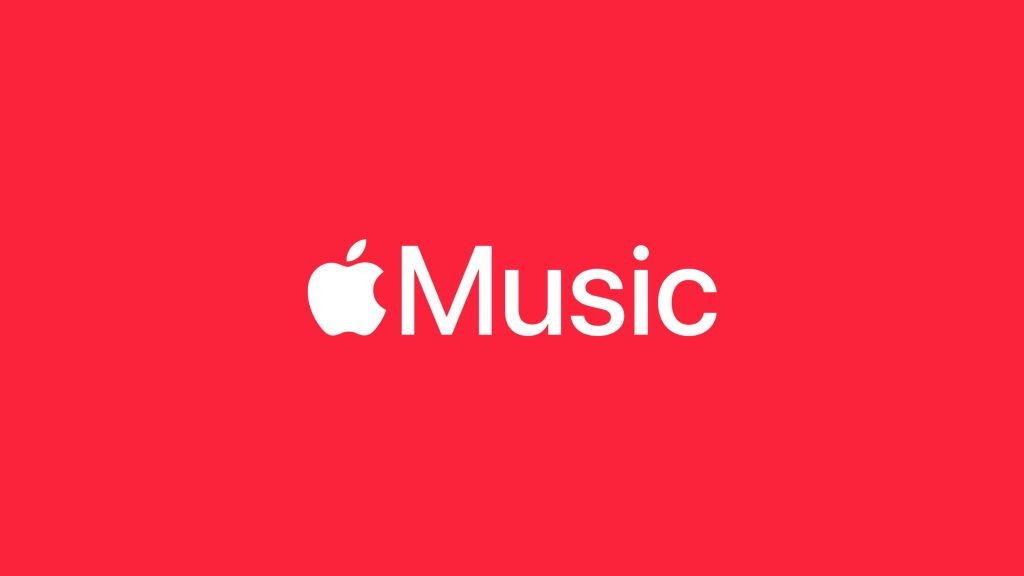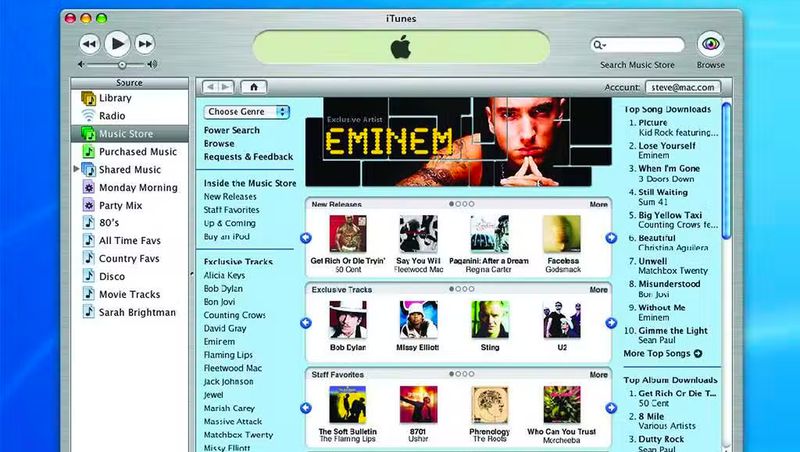At Soundiiz, we’re passionate about the world of music streaming. But also by the history of this industry. So, logically, we like to go back in time to understand how everything evolved. And as we delve into the past, it’s hard not to cross paths with iTunes’ ancestor, SoundJam MP. Meet SoundJam, music streaming’s ancestor!

How did it all start? We’re taking the time machine and taking you with us!
SoundJam: a brief history of its founders
We all know the story: In 2001, iTunes arrived on the market, and the record industry was turned upside down. Using the MP3 format, which was relatively new then, this library of songs available for purchase online changed how consumers interacted with the artists they listened to daily. After 2001, nothing would ever be the same again. The world of music streaming was born, and almost twenty-five years later, it has become the preferred way to listen to music.

But before iTunes? What was there? The answer can be summed up in one word: SoundJam. SoundJam is, first and foremost, the story of three men. Jeffrey Robin, born in Chicago, joined Apple in 1992. There, he met Bill Kincaid, with whom he worked on operating systems, some of which were failures. Apple was not yet the well-oiled machine it is today, and the nineties were years of trial and error.
Five years after his arrival, Jeffrey left Apple in 1997, the same year as Bill. Jeffrey remained in the Apple world, working on services related to Macs, the computers developed by Apple. Bill, on the other hand, joined a start-up. Two years later, they teamed up with Dave Heller, the third most important person in our history, to found a company they called SoundStep. You can see where we’re going with this.
Bill, Jeffrey, and Dave brainstormed for months and months—that’s not true—to come up with a name for their baby: SoundJam MP. History is in the making.
What was SoundJam?
The MP3 format was launched in 1993 – more of that in a following article -. As soon as it arrived, it was clear that it would be used on a massive scale. It enables significant developments. Jeff Robin, Bill Kincaid, and Dave Heller are well aware of this and are working on software to play MP3s on computers. Able to support both local and streamed files, the software quickly established itself as the MP3 player of choice for Mac users. It’s not the only one on the market, but it is the most complete for many. And the most intuitive to use.

SoundJam MP offered a range of features that significantly enhanced the user experience. It allowed users to customize its appearance, change its color, and burn CDs to encode them in MP3. According to its founders, the audio quality was optimal, and the most demanding users could adjust the parameters using an equalizer supplied with the software. Distributed under the Casady & Greene brand, SoundJam MP even won a Best Of Macworld award in 1999, with a satisfaction rate approaching 90%. These features set a new standard for music playback software and significantly improved the user experience.
As you can imagine, Apple is closely monitoring this software. And hopes to get its hands on it to kick-start its expansion. Just the thing: Apple has two entry points to SoundJam and not the least.
When did Apple buy SoundJam?
SoundJam competes with another program offering the same thing: Audion, which the Panic brand developed. SoundJam is being used increasingly, and Apple is looking to profit from a growing market. Apple knows Bill and Jeffrey well, having worked for Apple. At the time, Audion was in talks with AOL to negotiate a buy-out. They already seemed far removed from Apple. Needless to say, Audion’s employees must have been biting their fingers a few years later when iTunes exploded, and Apple became one of the world’s biggest companies. Bad timing!

When they decided to buy SoundJam, Apple also employed Dave Heller, the third member of a trio of promising engineers. They take SoundJam’s code and turn it into iTunes. Apple spokeswoman Alicia Awbrek stated in 2001:
“After purchasing SoundJam MP last fall, Apple created iTunes to bring even more Mac users into the digital musical revolution. . . . As of June 1, 2001, Apple will discontinue distribution of SoundJam to focus its resources on iTunes.”
Was this the end for SoundJam MP? In its original form, yes. Bought by Apple and absorbed into its ecosystem, the software disappeared. But the story doesn’t end there. Dave, Jeffrey, and Bill are still working for Apple. Jeff is even the director of the company’s developer branch.
What happened next?
iTunes arrives, and everything changes. Whereas music fans had become accustomed to ripping their CDs and listening to them on their computers, using players like SoundJam, iTunes took the opposite approach. Funnily enough, iTunes was billed as “the world’s best and easiest to use ‘jukebox’ software at its launch.” The term “jukebox,” also used to describe SoundJam MP, refers to those machines from another era that played songs in random mode. It’s only a short step from there to thinking that jukeboxes are the ancestors of the music industry’s digital revolution!
Music is available digitally on iTunes: you no longer need a CD to listen to anything. The advent of the Internet and the development of computers changed everything. The market will soon move from physical to digital. It’s a fundamental, significant change, even a revolution. And it’s all been kick-started by SoundJam MP, a playback software that could never have imagined an evolution of this magnitude.

iTunes has simplified SoundJam’s formula, making all controls accessible in one place and enhancing the user experience. Apple has transformed SoundJam from an effective tool reserved for a circle of insiders into a consumer program that’s easy to use. Apple’s great strength is sensing trends, making the inaccessible easy, and taking the world with them. To SoundJam MP’s rather staid screen, iTunes adds a visual dimension, the ability to organize your music collection, and the ability to customize your CDs.
Six months after iTunes’ launch, a new revolution occurred: the arrival of the iPod.
But that’s a story for another day!



